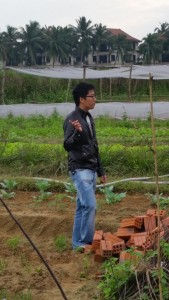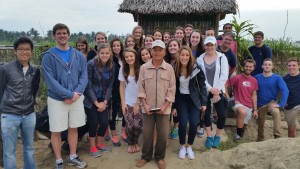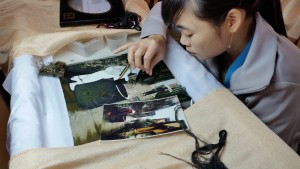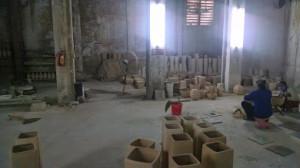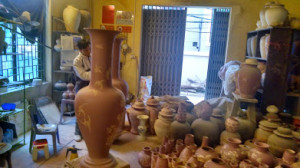Throughout our time in Hoi An, I made a few observations that really struck me about the culture of Vietnam compared to the culture of America. First, I noticed that people are willing to bargain for anything, down to any price, if it means they will make a sale. Second, I saw the complete disregard and lack of compassion towards animals.
The shopping culture of Hoi An did not really surprise me. I knew when I came to Vietnam that I would be able to haggle and bargain almost everything I bought. I also knew that the storekeepers would try to rip me off, and if I didn’t bargain I would probably be paying way too much for a good that was not worth it. What I wasn’t expecting was for shopkeepers to bargain so low with me, or for them to chase me down the street when I walked away. This really struck me because it showed how important just making a single sale was to them. Whether they got the price they asked for or not, any sale was a sale, and it meant money. I also noticed that a lot of the shopkeepers would compliment me or engage me in a nice conversation in order to get me to pay. For example, I was walking in a market and a woman came up to me and asked about where I was from and complimented my hair and my skin, then offered to give me a manicure for $1. While I would have loved to pay for her service, I did not want to get a manicure on the side of the road. She even took me to her shop and showed me around and gave me her card, all in the hopes I would sit down for a $1 manicure. She also told me how her sister is a nail technician in the US, and she was so proud of her for that. I found it very interesting and also kind of sad that she was so proud of her sister for getting to be a nail technician in America, and that she was so desperate to paint my nails. The entire shopping situation in Hoi An was very humbling, and it made me realize I that bargaining a few extra dollars down isn’t really worth it because these people need the money more than I do.
Aside from the shopping, what absolutely struck me the hardest was the animal situation in Hoi An. We constantly saw dogs and cats sleeping on the side of the road, which is normal in a developing country but not normal to me. It broke my heart to see them so skinny and not being taken care of. There were two separate instances, though, that really put me over the edge, and I wish I could have done something to help. First, I saw a small puppy sitting behind a man on a motor bike, shaking and not strapped in. The dog easily could have just fallen off and been run over. Seeing the scared dog, and knowing its fate (eventually it will probably be eaten) made me upset. The dog is helpless and petrified, and the fact that people here do not treat them properly makes me sad. Next, I was in the market and saw a dying kitten on the side of the road. It could not have been more than 3 weeks old, and it was shaking and had red, crusty eyes. I knew that by the end of the day it would probably die, whether it was too sick or got hit by a motor bike. As I am sitting there, wishing I could help it, I see people just walking by, stepping over it, and not even caring that this little kitten is suffering. The entire situation made me rally think about humane treatment of animals, and it would be awesome if those values could be taught to the people of Vietnam, or if an animal shelter could be created. It is hard for me to understand that some people just don’t care about them, especially because they are so helpless and dependent on humans.
Overall, Hoi An was my favorite stop of the trip. Aside from the sad animals, I loved how easy it was to shop and how I could get anything custom made just for me. The beachy feel and beautiful lanterns and bridges were amazing, and the food was so. Fresh and delicious. I would love to be able to come back to Vietnam and spend more time there.
 Follow
Follow
